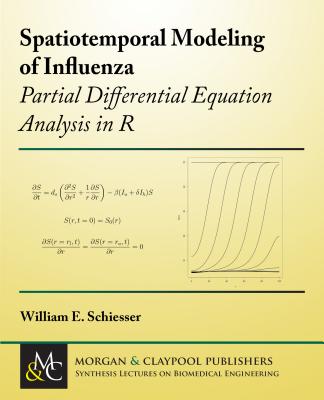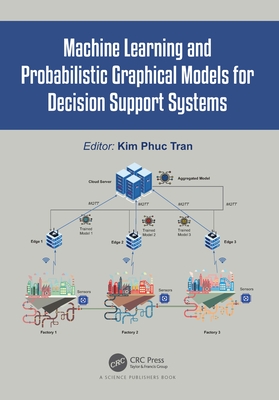Numerical Modeling of COVID-19 Neurological Effects: ODE/PDE Analysis in R
暫譯: COVID-19 神經影響的數值建模:R 中的 ODE/PDE 分析
Schiesser, William
- 出版商: CRC
- 出版日期: 2024-01-29
- 售價: $2,420
- 貴賓價: 9.5 折 $2,299
- 語言: 英文
- 頁數: 188
- 裝訂: Quality Paper - also called trade paper
- ISBN: 1032152133
- ISBN-13: 9781032152134
海外代購書籍(需單獨結帳)
商品描述
Covid-19 is primarily a respiratory disease which results in impaired oxygenation of blood. The O2-deficient blood then moves through the body, and for the study in this book, the focus is on the blood flowing to the brain. The dynamics of blood flow along the brain capillaries and tissue is modeled as systems of ordinary and partial differential equations (ODE/PDEs).
The ODE/PDE methodology is presented through a series of examples,
1. A basic one PDE model for O2 concentration in the brain capillary blood.
2. A two PDE model for O2 concentration in the brain capillary blood and in the brain tissue, with O2 transport across the blood brain barrier (BBB).
3. The two model extended to three PDEs to include the brain functional neuron cell density.
Cognitive impairment could result from reduced neuron cell density in time and space (in the brain) that follows from lowered O2 concentration (hypoxia).
The computer-based implementation of the example models is presented through routines coded (programmed) in R, a quality, open-source scientific computing system that is readily available from the Internet. Formal mathematics is minimized, e.g., no theorems and proofs. Rather, the presentation is through detailed examples that the reader/researcher/analyst can execute on modest computers. The PDE analysis is based on the method of lines (MOL), an established general algorithm for PDEs, implemented with finite differences.
The routines are available from a download link so that the example models can be executed without having to first study numerical methods and computer coding. The routines can then be applied to variations and extensions of the blood/brain hypoxia models, such as changes in the ODE/PDE parameters (constants) and form of the model equations.
商品描述(中文翻譯)
Covid-19 主要是一種呼吸系統疾病,導致血液中的氧氣供應受損。缺氧的血液隨後在體內循環,這本書的研究重點是流向大腦的血液。血液在大腦毛細血管和組織中的流動動力學被建模為常微分方程和偏微分方程系統(ODE/PDEs)。
ODE/PDE 方法論通過一系列範例進行介紹:
1. 一個基本的偏微分方程模型,用於描述大腦毛細血管血液中的氧氣濃度。
2. 一個雙偏微分方程模型,用於描述大腦毛細血管血液和大腦組織中的氧氣濃度,並考慮氧氣穿越血腦屏障(BBB)的運輸。
3. 將這兩個模型擴展為三個偏微分方程,以包括大腦功能性神經元細胞密度。
認知障礙可能源於隨著氧氣濃度降低(缺氧)而導致的神經元細胞密度在時間和空間(大腦內)的減少。
這些範例模型的計算機實現是通過用 R 語言編寫的例程來呈現,R 是一個高品質的開源科學計算系統,隨時可以從互聯網上獲得。正式的數學內容被最小化,例如,沒有定理和證明。相反,通過詳細的範例進行展示,讀者/研究者/分析師可以在普通計算機上執行這些範例。偏微分方程的分析基於線法(MOL),這是一種已建立的偏微分方程通用算法,使用有限差分法實現。
這些例程可以從下載鏈接獲得,以便在不需要先學習數值方法和計算機編碼的情況下執行範例模型。然後,這些例程可以應用於血腦缺氧模型的變化和擴展,例如 ODE/PDE 參數(常數)和模型方程形式的變更。
作者簡介
William E. Schiesser is Emeritus McCann Professor of Computational Biomedical Engineering, Chemical and Biomolecular Engineering and Professor of Mathematics at Lehigh University. His research is directed toward numerical methods and associated software for ordinary, differential-algebraic and partial differential equations (ODE/DAE/PDEs), and the development of mathematical models based on ODE/DAE/PDEs. He is the author, coauthor or coeditor of 30+ books, and his ODE/DAE/PDE computer routines have been accessed by thousands of colleges and universities, corporations and government agencies.
作者簡介(中文翻譯)
威廉·E·史基瑟(William E. Schiesser)是萊海大學(Lehigh University)計算生物醫學工程、化學與生物分子工程的榮譽麥肯教授(Emeritus McCann Professor),以及數學教授。他的研究方向是針對常微分方程(Ordinary Differential Equations, ODE)、微分代數方程(Differential-Algebraic Equations, DAE)和偏微分方程(Partial Differential Equations, PDE)的數值方法及相關軟體,並基於ODE/DAE/PDE發展數學模型。他是30多本書籍的作者、合著者或共同編輯,其ODE/DAE/PDE計算程式已被數千所大學、企業和政府機構使用。






























